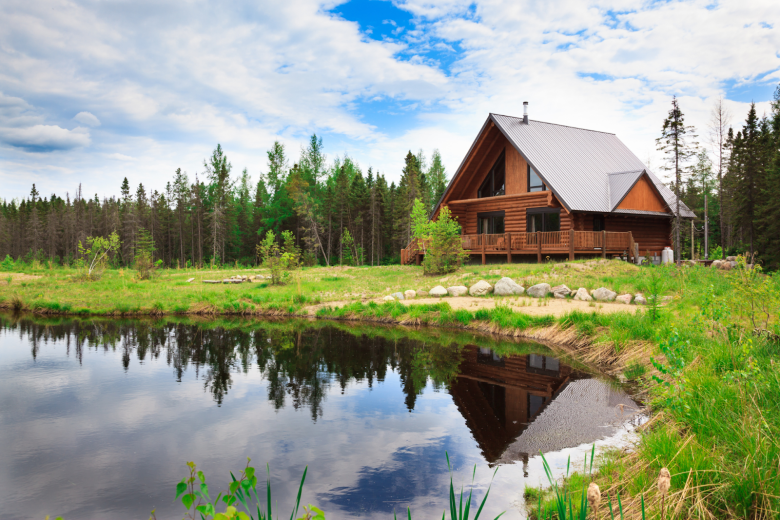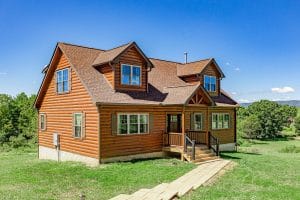Owning a log cabin is a dream come true for many homeowners. The charm of natural wood, the cozy ambiance, and the connection to nature make log cabins uniquely appealing. However, these beautiful homes require specialized maintenance to remain safe, functional, and attractive year after year. Without proper care, your cabin can suffer from water damage, insect infestations, and structural issues. In this guide, we’ll share expert advice on how to maintain your log cabin for long-lasting durability and enjoyment.
Regular Inspections Are Key
The foundation of log cabin maintenance starts with consistent inspections. Regularly examine both the interior and exterior of your cabin for cracks, water stains, or insect damage. Pay close attention to areas where logs join, around window frames, doors, and roof edges.
Identifying issues early allows you to address minor problems before they escalate into costly repairs. For example, small cracks in logs can be filled with chinking or sealant, while water stains may indicate roof or gutter issues that need prompt attention. By keeping a proactive inspection routine, you ensure your cabin remains structurally sound and visually appealing.
Protect Your Logs With Proper Treatments
Logs are natural materials that require protection against moisture, UV damage, and pests. Applying high-quality sealants or stains helps preserve the wood’s appearance and extends its lifespan. For most cabins, it’s recommended to apply a protective coat every 3 to 5 years, depending on the climate and exposure to sun or rain.
Choose products specifically designed for log homes, as they penetrate deeply and provide long-lasting protection. A well-maintained exterior not only enhances your cabin’s beauty but also prevents rot and insect infestations.
Manage Water and Drainage
Water is one of the biggest threats to log cabins. Poor drainage around your home can lead to foundation issues, mold growth, and wood decay. Ensure the ground slopes away from the cabin to prevent water from pooling near the logs.
Gutters and downspouts are essential to direct rainwater away from your home. Clean them regularly to prevent clogs and overflow. In areas with heavy rainfall or snow, consider installing a gravel perimeter or French drains for added protection. Proper water management keeps your logs dry and your cabin structurally secure.
Roof and Chimney Maintenance
Your roof and chimney play a critical role in protecting your log cabin from the elements. Inspect shingles, metal panels, or tiles regularly for damage, moss, or loose sections. Leaks in the roof can allow water to seep into the logs, causing rot and structural weakness.
Chimneys should also be cleaned and inspected periodically, especially if your cabin uses a wood stove. Removing creosote buildup and ensuring the chimney is structurally sound prevents fire hazards and improves heating efficiency. A well-maintained roof and chimney safeguard your cabin year-round.
Pest Prevention and Control
Log cabins are naturally attractive to pests like termites, carpenter ants, and wood-boring beetles. Early detection is essential to prevent significant damage. Inspect areas where logs meet foundations, around windows, doors, and roof overhangs.
Using insecticides or wood preservatives designed for log homes can help deter infestations. Remove debris, firewood piles, and overgrown vegetation around your cabin, as these provide hiding places for pests. Regular pest control ensures your cabin remains safe and structurally sound.
Interior Humidity and Moisture Management
Interior humidity directly impacts the health of your logs. Logs expand and contract with changes in moisture, which can lead to warping, gaps, or cracks. Use dehumidifiers in damp areas and ensure proper ventilation in kitchens, bathrooms, and basements.
Monitor plumbing and check for leaks around windows and doors. Keeping indoor moisture under control not only protects the wood but also prevents mold and mildew growth, enhancing comfort and air quality in your cabin.
Windows, Doors, and Seals
Windows and doors are often overlooked in log cabin maintenance, yet they play a crucial role in protecting your home. Inspect frames and seals for cracks or gaps that could let in drafts, moisture, or insects.
Applying high-quality caulking and weatherstripping enhances energy efficiency and keeps your cabin comfortable year-round. Consider upgrading to energy-efficient windows specifically designed for log cabins to improve insulation and prevent moisture penetration.
Seasonal Maintenance Tips
Winter Care: Protect your cabin from snow and ice damage by trimming overhanging branches and removing snow from the roof and around the foundation. Insulate pipes and check heating systems to prevent freezing and water damage.
Spring and Summer Care: During warmer months, inspect the exterior for UV damage, cracks, or insect infestations. Gently power wash logs to remove dirt, pollen, and mildew. Ensure gutters and drainage systems function properly after heavy rains. Summer is also ideal for scheduling professional inspections to address any hidden issues.
FAQs About Log Cabin Maintenance
Q1: How often should I inspect my log cabin?
A: Conduct inspections at least twice a year, preferably in spring and fall, to identify potential issues early.
Q2: Can I use regular paint on my logs?
A: It’s better to use stains or sealants designed for log homes. Regular paint can trap moisture and accelerate decay.
Q3: What is the best way to prevent insect damage?
A: Remove debris and vegetation near the cabin, use borate-based treatments, and schedule periodic pest control inspections.
Q4: How do I maintain indoor humidity?
A: Use dehumidifiers, ventilate properly, and address plumbing leaks promptly to maintain consistent indoor moisture levels.
Q5: Is professional maintenance necessary?
A: While DIY care is helpful, professional inspections every few years ensure that hidden damage or potential issues are properly addressed.
Conclusion
Maintaining a log cabin requires commitment, attention to detail, and the right techniques. From regular inspections and log treatments to pest control, moisture management, and seasonal care, every step contributes to the longevity of your home. By following these expert tips, you protect your investment, preserve its natural beauty, and enjoy the comfort and charm of your log cabin for years to come. A proactive approach to maintenance ensures that your cabin remains not only a cozy retreat but also a durable and safe home year-round.



